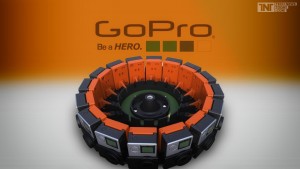Virtual reality was traditionally used for military training but has more recently has become popular in gaming (video games) and is now being touted as the next big thing in digital marketing. A number of brands such as North Face, Marriott, Volvo have used virtual reality experiences to promote their brands and products. North Face unveiled virtual reality experiences in its Manhattan stores where viewers were able to experience hiking, rock-climbing and base-jumping to excite customers about buying gear and going on an outdoor adventure. Thomas Cook, a global travel company, has placed Samsung VR headsets in 10 of its stores where customers can experience travel destinations like Santorini and Manhattan to encourage users to go on these vacations. Some companies like Birchbox have announced that subscribers will receive a cardboard VR headset and instructions to download branded VR experiences to their smartphones.
With the release of Google Cardboard that only costs $30 virtual reality has now become much more accessible making it much more likely that companies will be making content since it’s now more likely to be consumed. While the quality is not as high as that of Oculus Rift, it doesn’t boast OR’s $350 price tag and makes VR accessible.
Not only are companies using VR getting excitement from their customers trying the VR experiences they are getting a lot of press and attention just for using VR as it is still in its infancy with respect to marketing uses.
With the release of VR headsets for consumers in a wide range of prices VR is becoming more accessible to consumers but the cost and uncertainty around creating VR content and whether it will pay off is still preventing many to companies from giving it a try. However, any big brand does have the ability to film VR content at a relatively low percentage of its marketing budget and the buzz surrounding VR content increases the return for brands. All it requires is cameras that can cover a 360 degree view and a software program to stitch the footage together. Many creators of VR content are using GoPro’s where 16 of the cameras have been attached as shown below.
VR may seem like a daunting and expensive task for companies but programs like Google Jump make it east to create and provide VR content to your audience. Google Jump provides a VR camera that costs $15,000 as well as a video assembler that stitches the files together to create a seamless globe and then a player on YouTube which includes support for viewing via CardBoard or regular viewing without Cardboard.
With the cost coming down I think companies will start adopting it more prevalently, however, the success of VR for marketing will all depend on whether consumers widely adopt it. It’s a risky strategy since it’s not mainstream yet but with the cost so low and it being such an amazing technology it’s only a matter of time in my opinion.
